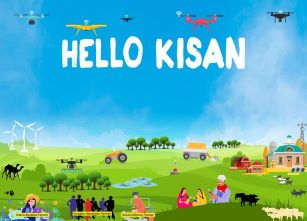1. Core Agriculture Activities;
1.1 Open Field Crops;
1.1.1 Coarse Cereals/ Millets;
Where Did These Grains Come from Anyway? (OG Grain Vibe / Historical Roots) : These are ancient grains, staples for centuries in many cultures, known for their hardiness.
Were They Ever a Big Deal? (Past Life / Past Relevance) : Absolutely! Especially in drier regions, they were a reliable, low-cost food source for people and animals.
Why the Buzz Now? (Now Playing / Current Significance) ; They're making a comeback as folks look for healthier, gluten-free options and planet-friendly foods that handle tough conditions.
What's the Long Game Here? (Future Forecast / Long-Term Potential) ; Experts see a bright future as we need more nutritious and climate-resilient crops. Expect more innovation and market growth.
Could Your Farm Be a Millet Powerhouse? (Your Farm? Quick Check / Farm Suitability Assessment) ; If your land is on the drier side and you're looking for a resilient crop with rising demand, it's worth a serious look. Check local markets and any government support.
Being an Absentee Farmer – Can You Still Make This Work? (Absentee Life Hacks (or Fails) / Absentee Farmer Considerations) ; It's doable, but you'll need trustworthy local partners for day-to-day management and a smart plan for selling your harvest. Remote monitoring can help.
Show Me the Money! What's the Deal with Costs and Returns? (The Coin Flip / Economic Implications) ; Generally, growing millets costs less than water-hungry crops. Weather is a risk, but the market is improving. Smart farming and maybe even processing can boost your returns.
Hello Kisan's Take: Millets offer a compelling opportunity, especially for farms in drier areas, aligning with growing health and sustainability trends. For absentee farmers, success hinges on strong local management and effective market strategies. Dive into your local market and see if millets fit your farm's future!
